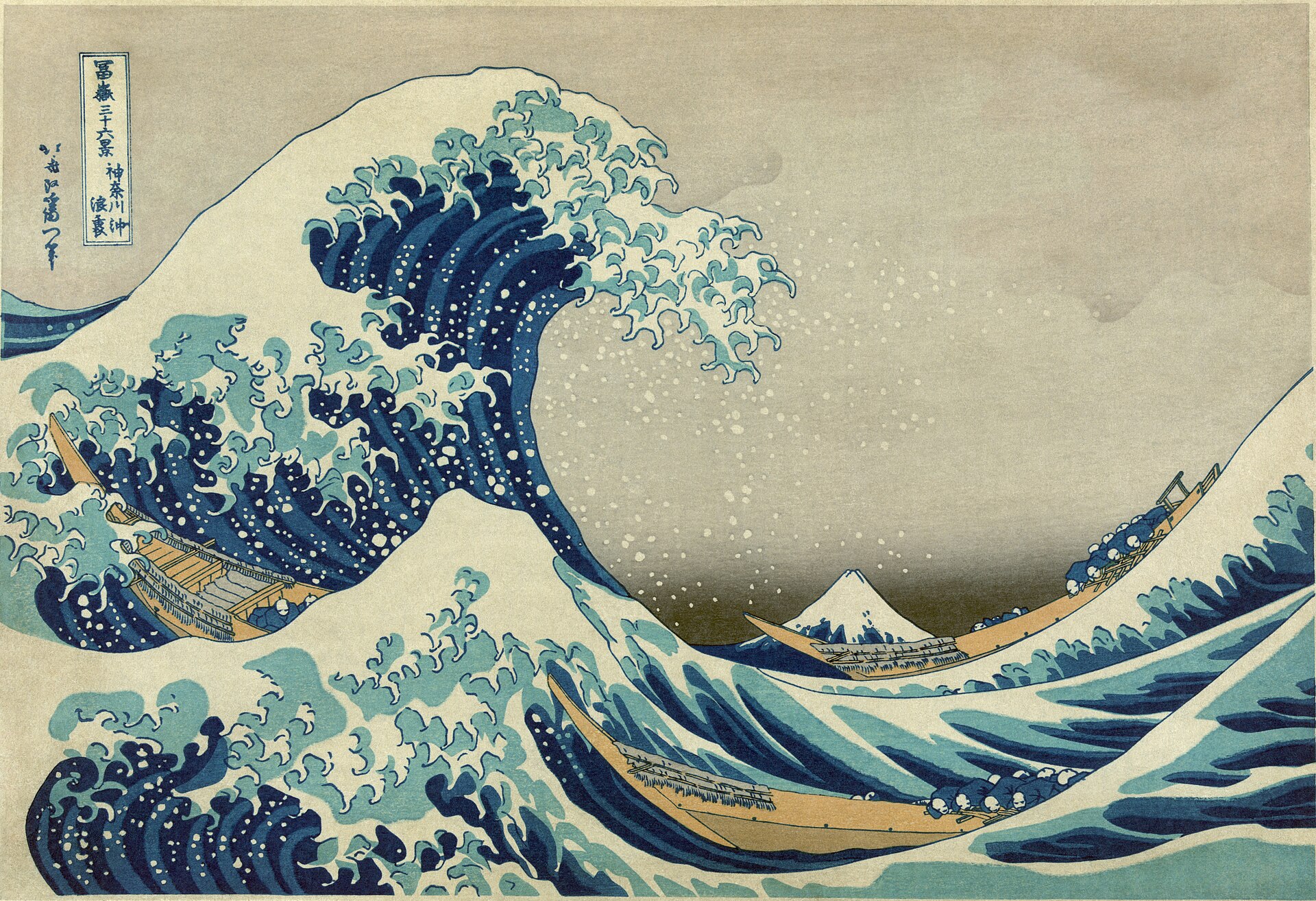 |
| Katsushika Hokusai, in an 1839 self-portrait |
A man of many psuedonyms, Hokusai was a great contributor to the popularity of Japonism, the study of Japanese art and artistic talent throughout Western Culture. His works have influenced many other iconic artists from the Impressionism of Claude Monet to the style of Art Nouveau of Gustav Klint.
 |
| The Great Wave off Kanagawa, from Thirty Six Views of Mount Fuji |
Mastering what would go on to be his signature medium of wood block prints, the subjects of Hokusai’s works shifted from depictions of courtesan life to powerful landscapes, with water and Mount Fuji playing a prominent role in many of his works. In the days before Hokusai, ukiyo-e prints had not featured landscapes. Hokusai was also known for his many brush paintings.
 |
| Egrets from Quick Lessons in Simplified Drawing, 1823 |
Hokusai’s most popular work is the ukiyo-e series Thirty-Six Views of Mount Fuji of which The Great Wave off Kanagawa is the most famous print. Ten prints were added to the collection after initial publication to a total of 46 prints that depict Mount Fuji from different locations and in different seasons. Mount Fuji has significance in Japanese culture as a spiritual and artistic muse, traditionally linked with immortality.
_-_Google_Art_Project.jpg/1920px-Katsushika_Hokusai_-_Fine_Wind%2C_Clear_Morning_(Gaif%C5%AB_kaisei)_-_Google_Art_Project.jpg) |
| Fine Wind, Clear Morning, from Thirty-six Views of Mount Fuji |
I chose to highlight the works of Hokusai as his works hold particular cultural significance for me as a Japanese citizen. I do not often find the works of Asian artists represented or displayed with prominence in Western spheres and I thought that it was important to celebrate the cultural diversity of Hokusai’s artwork. This belief stems from the fact that all artwork is a representation of the society it is created in and the works of Hokusai reflect an integral part of Japanese culture to the admirers of his artwork.
Works Cited
Baatsch, H. (2016). Hokusai: A Life in Drawing.
Nussbaum, Louis Frédéric. (2005). "Hokusai" in Japan Encyclopedia, p. 345.
Digitalmuseum.rekibun.or.jp. (2018). TOKYO DIGITAL MUSEUM. [online] Available at: http://digitalmuseum.rekibun.or.jp/app/selected/edo-tokyo?no=200709 [Accessed 26 Feb. 2018].
Hokusai-katsushika.org. (2018). Katsushika HOKUSAI : Catalogue Raisonne - The complete work. [online] Available at: http://www.hokusai-katsushika.org/ [Accessed 26 Feb. 2018].
No comments:
Post a Comment